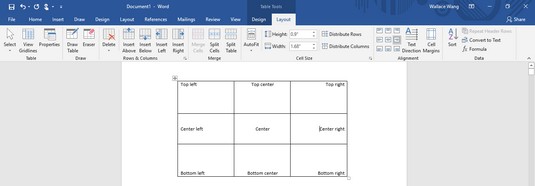

If the list doesn’t look right, click the Undo button a couple of times, or press Ctrl + Z to undo the deletion. If the table of contents styles aren’t in the pane, do the following to add them: Click the Options button at the bottom of the Style Pane. Or, right-click anywhere within the table, and select Table > Convert to Range. To remove a table but keep data and formatting, go to the Design tab Tools group, and click Convert to Range. Underneath the table style templates, click Clear. To do this, navigate to the folder where the file is stored, then click the file’s name. On the Design tab, in the Table Styles group, click the More button. Select the document that contains the table. Then, check that all the other rows are still okay, and the colored cells have been deleted Press Ctrl + O (Windows) or Command + O (macOS).If you want to select everything in your document, press Ctrl + A on your keyboard. Click the filter arrow in the column heading, and click the Clear Filter command To start, highlight the text containing the formatting you wish to remove.Select the colored cells, and on the Ribbon’s Home tab, click the arrow under the Delete commandĪs soon as you delete the rows, clear the filter.In the drop down, click Filter by Color, and select the color that you used.Click the arrow in the heading for the column where you applied the conditional formatting.Make a backup copy of your file first - just to be safe.On the Ribbon’s Data tab, click the Filter button.Īssuming that your list is in a named Excel Table, follow these steps to select the highlighted cells, and delete those rows.In the Convert Table to Text dialog box, set how you want to separate the text and click OK. From the Table Tools Layout tab in the Data group, select Convert to Text. Step 3: Select a cell in the worksheet where you want to paste the data.

Step 2: Now copy the entire Pivot table data by Ctrl+C. Select the menu and choose the Entire Pivot Table.
HOW TO REMOVE TABLE FORMATTING IN WORD BUT KEEP DATA HOW TO
If you’re working with a list in Excel, it’s best to convert the list to a named Excel Table, unless you have a compelling reason that you can’t do that.Ī named table has filters in the heading row by default, but if those have been turned off, you can quickly turn them back on: This feature works the same in all modern versions of Microsoft Word: 2010, 2013, and 2016. In this article, we will look into how to remove the Pivot Table but want to keep the data intact in Excel. Instead, you could use a filter to select the highlighted cells, and then delete the filtered rows. It’s a handy trick, but won’t work to select cells that are colored with conditional formatting. That article showed how to use the Find command, to get a list of cells that contain a specific word. If you’ve highlighted cells with conditional formatting, what’s a quick way to delete the rows those cells are in? Someone asked that question on one of my old blog posts last week.


 0 kommentar(er)
0 kommentar(er)
